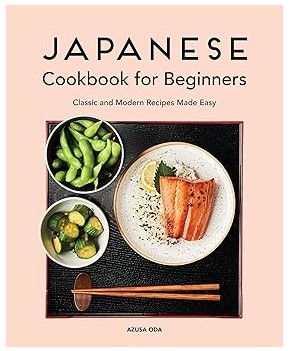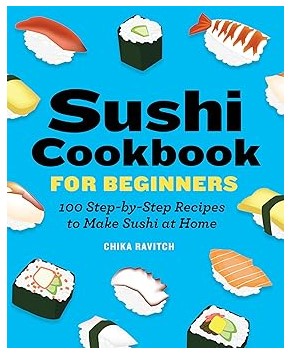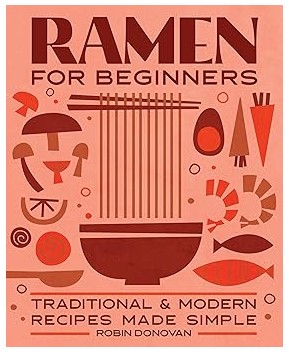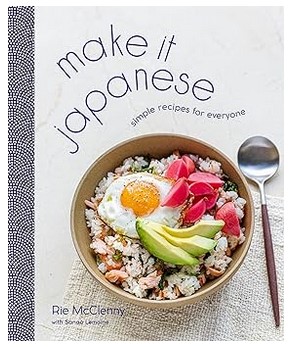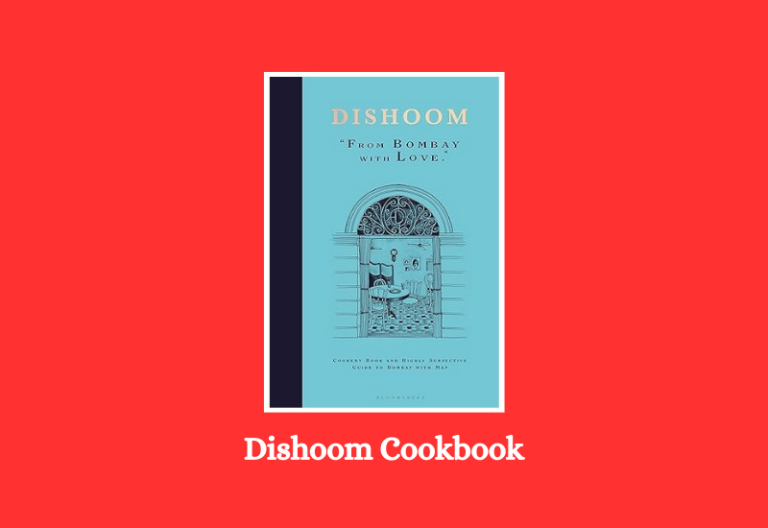5 Best Japanese Cookbooks for Beginners to Start Cooking at Home
Japanese food excites the senses with its balance of flavors, colors, and textures. From sushi and ramen to comforting bowls of miso soup, every dish carries a mix of tradition and artistry.
Many people think mastering Japanese cooking takes years, but the right cookbook makes the process simple and enjoyable. Beginners can discover easy-to-follow recipes that explain not only how to cook but also why each ingredient matters.
A good Japanese cookbook does more than list instructions; it guides readers through the culture, techniques, and flavors that shape the cuisine. Clear steps, helpful illustrations, and beginner-friendly recipes help anyone gain confidence in the kitchen.
With guidance, home cooks can prepare authentic meals while learning skills that grow with experience. This list of the 5 best Japanese cookbooks for beginners highlights practical options that simplify cooking, introduce key flavors, and inspire delicious meals at home.
5 Best Japanese Cookbooks for Beginners
1.
Cookbook Overview
A beginner-friendly Japanese cookbook should act like a guide in the kitchen. It should bring together everyday dishes that families in Japan cook and eat. The book should not feel overwhelming. Instead, it should focus on recipes that need common ingredients and simple steps.
This cookbook combines the most popular recipes from several smaller pocket editions. The result is a single large-format collection. It gathers the best dishes into one place, making it easier for new cooks to find what they need without searching through many books.
The author has selected her favorite and most-loved recipes. The goal is to create a book that feels complete yet easy to follow. Every recipe teaches something valuable about traditional Japanese cooking.
Recipe Categories
Everyday Rice and Noodles
Japanese meals often start with rice. The cookbook includes recipes for fluffy steamed rice, fried rice, and rice balls. For noodle lovers, there are recipes for soba, udon, and ramen. Each recipe shows how to prepare the base and how to add toppings for flavor.
Soups and Broths
Miso soup holds a special place in Japanese homes. The cookbook explains how to make it in simple steps. Other soups, such as clear broth with vegetables or seafood, bring variety. These recipes are short and easy, perfect for beginners.
Main Dishes
From teriyaki chicken to pork cutlets, the book offers recipes that feel familiar yet special. It also includes lighter options like grilled fish with soy sauce. Every recipe balances taste with ease of preparation.
Side Dishes and Vegetables
Small plates are an important part of Japanese cooking. The cookbook includes pickles, salads, and steamed vegetables. These dishes complement rice and meat, making every meal feel balanced.
Snacks and Sweets
The final section includes recipes for Japanese snacks and desserts. Beginners will enjoy simple treats like mochi or sweet pancakes. These recipes use everyday ingredients and create a fun cooking experience.
Features
Clear Instructions
The cookbook uses simple steps. Each recipe feels direct, without long explanations. This helps beginners focus on cooking instead of struggling with complicated words.
Traditional Flavor
Every recipe stays close to traditional Japanese cooking. The focus is on home-style meals rather than restaurant-style dishes. This makes the food easy to prepare and comforting to eat.
Wide Range of Recipes
From rice to desserts, the book covers all parts of a Japanese meal. Beginners get a full picture of how Japanese food works together on the table.
Beginner Friendly
No advanced tools are needed. Most recipes use common ingredients that can be found in regular grocery stores. This makes it easier for beginners to start cooking right away.
2.
Cookbook Overview
This sushi cookbook serves as a complete guide for first-time cooks. It explains the essentials of sushi-making without overwhelming details. The author highlights how sushi has grown across cultures and presents recipes that balance classic Japanese rolls with modern fusion ideas.
Each recipe comes with clear instructions. From preparing rice to rolling and slicing, the process feels approachable. No guesswork. Just follow the steps and watch your skills improve.
The cookbook also introduces the tools needed, like a bamboo rolling mat and rice paddle. Advice on choosing fresh fish, vegetables, and sauces helps you buy the right ingredients without confusion.
Recipe Categories
Classic Sushi Rolls
The book covers favorites like Tuna Rolls and California Rolls. These classics teach basic rolling skills and flavor pairing.
Creative Variations
Unique recipes such as Spicy Fried Mozzarella Rolls show how sushi can adapt to different tastes. These bring a fun twist for anyone wanting something beyond tradition.
Nigiri and Sashimi
Step-by-step instructions make raw fish dishes less intimidating. Simple plating ideas help beginners serve them beautifully.
Vegetarian Options
For those who do not eat seafood, there are fresh vegetable rolls, tofu options, and even egg-based recipes. The variety keeps the meals interesting.
Global Influences
Some recipes take inspiration from different cultures, offering a wider range of flavors. This mix makes the book engaging for families or groups with diverse tastes.
Features
Step-by-Step Guidance
Every recipe includes clear directions. The focus stays on helping beginners build confidence.
Ingredient Advice
The book explains how to select fresh fish, rice, and vegetables. It also lists pantry staples like sesame seeds and dashi stock powder that boost flavor.
Tool Recommendations
Simple tools like a sushi mat, rice paddle, and sharp knife are introduced. Each tool is explained so you know how to use it.
Variety of Recipes
With 100 recipes, the book ensures no one gets bored. Seafood lovers, vegetarians, and even adventurous eaters all find something to try.
Practical Tips
From rolling tight sushi to slicing cleanly, the book shares small tricks that make a big difference.
3.
Cookbook Overview
About the Cookbook
The cookbook “Ramen for Beginners” teaches readers to make easy and delicious ramen recipes at home. It contains more than 75 recipes. These range from simple dishes to more creative and inventive ones.
The book starts with a guide to essential ingredients. It explains the tools you need and how to prepare your kitchen for making ramen. This helps beginners feel confident before they start cooking.
Author Approach
The author focuses on clarity and simplicity. Each recipe has step-by-step instructions and clear measurements. Beginners can follow along without confusion.
Recipe Categories
Broth Recipes
The cookbook introduces “building block” recipes, such as rich chicken bone broth. These foundational recipes help you create deep, flavorful soups that form the heart of ramen.
Seasonings and Toppings
Seasonings like miso, soy sauce, and various spices allow you to customize flavors. Toppings include traditional options like soft-boiled eggs and inventive ones like crispy kale. Each addition layers new tastes and textures.
Creative Variations
Some recipes mix traditional and nontraditional ingredients. This adds variety and makes the dishes exciting. For example, soy-marinated eggs or ramen with unique vegetable combinations give fresh twists on comfort food classics.
Features
Step-by-Step Instructions
Every recipe includes clear steps and instructions. Beginners can follow along easily without guessing.
Ingredient Primer
The cookbook provides a guide to essential ingredients. It explains how to select and prepare items like noodles, broths, and toppings. This reduces confusion and saves time.
Flexibility and Creativity
The recipes allow customization. You can adjust flavors, try new toppings, and experiment with your own ideas. This feature encourages creativity while sticking to easy-to-follow methods.
Beginner-Friendly Design
The book is designed for new cooks. Simple language, short sentences, and clear organization make it accessible for people with limited cooking experience or English skills.
4.
Cookbook Overview
About the Book
“Ramen at Home” focuses on homemade ramen. It shows readers how to make restaurant-quality ramen without leaving the kitchen. Recipes are clear and easy to follow. The book also explains Japanese cooking essentials, so beginners can understand ingredients and techniques.
Author’s Approach
The author uses a step-by-step style. Every recipe includes simple instructions. Tips are included to help beginners avoid common mistakes. Side notes also provide cultural context, which makes cooking more enjoyable.
Recipe Categories
Broths
The book covers a wide variety of broths. From rich pork-based tonkotsu to lighter soy or miso broths. Each recipe explains the right cooking time and flavor balance.
Noodles
Homemade and store-bought noodles are included. The book teaches how to cook them perfectly and match them with the right broth.
Toppings and Bowls
Recipes for toppings like chashu pork, soft-boiled eggs, and fresh vegetables are easy to follow. It also explains how to assemble your ramen bowl beautifully.
Side Dishes
Ramen works well with small side dishes. Recipes include Japanese appetizers and pickles to complement your ramen experience.
Features
Complete Beginner’s Guide
The book teaches everything from pantry essentials to plating techniques. Beginners can follow along without feeling lost.
Step-by-Step Instructions
Each recipe has detailed steps. Even someone new to cooking can make tasty ramen. Pictures and tips make it easier to understand.
Over 100 Recipes
The book includes recipes for broths, noodles, toppings, bowls, and sides. Some are traditional Japanese flavors, while others have new twists for creativity.
Cultural Insights
Readers learn about Japanese food culture along the way. It explains why certain ingredients are used and what makes Japanese cuisine special.
5.
Cookbook Overview
About the Author
Rie McClenny grew up in Japan and later moved to the United States. She learned to cook from her mother, who prepared traditional Japanese dishes with love and care. Rie later became a popular personality on BuzzFeed Tasty, known for her “Make It Fancy” video series. Her experience combines deep knowledge of Japanese ingredients with practical cooking methods that work in an American kitchen.
Purpose of the Cookbook
“Make It Japanese” teaches home cooks how to prepare comforting Japanese meals without complicated ingredients. The recipes are straightforward and focus on authentic flavors while adapting to what is available in local supermarkets. The book shows that Japanese cooking can be simple, fun, and rewarding.
Recognition
This cookbook has received praise from culinary experts and media outlets. Chef Nobu Matsuhisa, owner of Nobu Restaurant Group, praised Rie for reconnecting readers with Japanese home cooking. The book was also named a Best Cookbook of the Year by Los Angeles Times, NPR, and Good Housekeeping.
Recipe Categories
Traditional Dishes with a Twist
The book includes classic recipes with modern touches. Examples include:
-
Loaded Vegetable Miso Soup with kale and sweet potatoes
-
Roasted Cauliflower Goma-ae coated in toasted sesame dressing
-
Easy Soy Sauce Ramen packed with umami flavors
-
Mini Okonomiyaki Pancakes perfect for lunch or snack
These recipes maintain traditional flavors but use ingredients that are easy to find outside Japan.
Classic Favorites
Rie also shares must-try staples for any Japanese kitchen:
-
Pork Tonkatsu – crispy, tender, and satisfying
-
Chicken-Tofu Tsukune – flavored with ginger for depth
-
Oyako Don – a comforting rice bowl topped with chicken and egg
These dishes help beginners understand essential cooking methods, like simmering proteins and preparing rice bowls.
Interactive and Festive Recipes
Special occasions get special recipes. Examples include:
-
Chicken Hot Pot with Ponzu – perfect for winter nights
-
Gyoza with Crispy Wings – great for parties or casual dinners
-
Hand Rolls for a Temaki Party – fun and customizable for guests
These hands-on recipes encourage family or friends to cook together, making the experience more engaging.
Desserts
Rie also includes simple Japanese sweets that are easy for beginners:
-
Simple Strawberry Shortcake – light and fruity
-
Matcha Snacking Cake – perfect for tea time
-
Citrus Mochi Doughnuts – chewy, sweet, and fun to make
These desserts bring a touch of Japanese flavor to the end of any meal.
Features
Easy-to-Find Ingredients
Recipes use a small set of Japanese staples like soy sauce, mirin, and sake. Ingredients are selected so beginners can cook without special shopping trips.
Clear Instructions
Steps are simple and easy to follow. Rie explains basic techniques like frying tempura, simmering vegetables, and making rice bowls in a way beginners can understand.
Beautiful Photography
Each recipe comes with bright, appealing photos. Images show what the finished dish should look like, making it easier to follow along and stay motivated.
Versatility
Recipes suit everyday cooking and special gatherings. Weeknight dinners, festive meals, or casual parties all have options in this cookbook.
Final Thoughts
Exploring Japanese cooking does not have to be difficult. Simple recipes, clear instructions, and everyday ingredients make it easy to enjoy authentic flavors at home. “Make It Japanese” offers a mix of traditional dishes, festive meals, and desserts that anyone can try.
With this cookbook, beginners can build confidence in the kitchen, understand essential techniques, and create meals that are both comforting and delicious. For anyone starting their journey in Japanese cuisine, this book ranks among the Best Japanese Cookbooks for Beginners.

